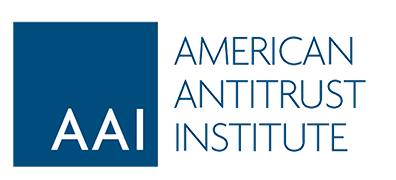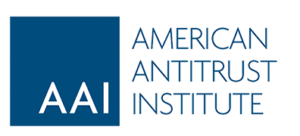A consensus is emerging that stronger enforcement is imperative to rein in powerful monopolies and oligopolies and to promote the free and competitive markets that undergird our democracy. As the Biden Administration takes power, it has a strategic and important opportunity to appoint antitrust leadership that can boldly lead the way to an antitrust renaissance. To realize this opportunity, AAI asks President Biden to keep three major goals in mind in selecting candidates to the lead the antitrust agencies: confidence, competence, and capability.
Confidence
The most immediate goal for President Biden in selecting leaders for the Federal Trade Commission (FTC) and the Antitrust Division at the Department of Justice (DOJ) must be to restore confidence in those agencies. Such confidence—once indisputable—has been shaken by the last four years. To be effective law enforcers, these agencies must regain public confidence that they will enforce the laws aggressively and equitably. Confidence that they will be non-partisan. Confidence that their leaders will be driven by integrity and not by the personal or business relationships they entered before assuming office and will resume upon leaving. And confidence that the agencies will answer to the American people and not to the companies they regulate and oversee.
Appointing those with strong ties to, or a track record of, working on behalf of dominant companies in tech and other industries will not further this goal, no matter how smart, knowledgeable, or experienced they may be. Those appointed to lead the agencies must also give the American people confidence that they will vigorously enforce the law, as written by Congress. Broader policy initiatives for reform of the nation’s antitrust laws are a worthy goal. But, the agencies are principally a place where the law is prosecuted, not where it is remade. That job belongs squarely to Congress. Instead, the focus of the agencies and their leadership ought to properly be enforcement—aggressive, dynamic, and creative enforcement that falls within the bounds of the agencies’ clearly marked authority.
Competence
Antitrust enforcement is a specialized job requiring specialized skills. Any nominee for an agency leadership position must possess several core competencies to do the job effectively. First and foremost, a successful nominee must have significant litigation experience. The DOJ achieved something remarkable with its recent filing against Google. To fully realize the promise of that achievement will require not just filing the case, but winning it. Constructing and winning an antitrust case requires more than legal and economic theory—it requires the ability to persuade a court. And that is precisely what litigators are trained to do.
Second, President Biden would do well to select leaders with a proven track record as effective enforcers—whether federal, state, or private. There is a deep well of untapped talent and enforcement experience among current and former state and private enforcers in particular. The Administration should not overlook those who have devoted their careers to playing offense, instead of defense, on behalf of the victims of antitrust violations.
Finally, any nominee should possess the competency of a deep and multifaceted knowledge of the antitrust laws. Antitrust is a nuanced and complex doctrine with a rich and long history. The strongest nominees will have a demonstrated grasp of this complexity and history, informed by having viewed antitrust enforcement from several perspectives. Having represented a mix of plaintiffs and defendants, having worked for state and federal enforcement agencies, or having held a mix of policy and enforcement roles reflects experience sitting at all sides of the antitrust “table.” This deep experience both enriches and informs a nominee’s understanding of the task at hand and is both necessary and valuable for guiding the antitrust agencies through what could prove to be difficult years ahead.
Capability
All of the above qualifications, important though they are, mean nothing if the people chosen to lead the agencies do not have the power to get things done. Such capability stems from a mix of determined persistence and adept deployment of “soft power.” The aggressive pursuit of tough cases will only go so far in achieving competitive markets. Strong messaging, extensive coordination, and a clear vision are essential.
Case in point, former Assistant Attorney General Bill Baer brought many successful and significant cases during his tenure. However, he achieved untold other victories by strongly and clearly signaling—through speeches and conversations—that his agency would aggressively pursue any attempt, for example, to bring more 4-to-3 mergers. A tough, clear, unified public message can effectively guard against diminished competition through deterrence, without using agency resources to bring a case. The agencies need leaders who understand this power and how to wield it.
Capable agency leadership will also entail a deft touch, particularly at the FTC. These are critical years in the history of the Commission. The recent AMG Capital Management case before the Supreme Court has put the Commission’s 13(b) authority in jeopardy. There are other signs the FTC, and perhaps all independent agencies, may face legal challenges to their very existence. In this environment, FTC leadership must be particularly judicious in the cases it pursues and, simultaneously, be prepared to work with Congress to maintain and restore its authority.
Capability at the FTC also depends critically on the dynamics within the Commission. The selection of the Chair is important, but so too is the balance of the non-chair appointments. Non-chair commissioners can do a lot of good and they can do a lot of harm. A well-functioning FTC depends critically on its staff. Each commissioner must be able to effectively manage and motivate their staff to do the hard but important work of the Commission. One way commissioners do so is by embracing the spirit of collegiality that is the lifeblood of the FTC.
By design, the FTC is a bi-partisan body. When five experts with diverse backgrounds come together to wrestle with important issues, better outcomes are expected. To do that effectively, however, each FTC commissioner must have the ability to work collegially and, when necessary, put personal views aside to reach consensus. Showboating and dissenting for the sake of dissent—particularly when a case is headed to court—impair the Commission’s effectiveness and reputation. By choosing commissioners who understand this dynamic and have the balance of qualities needed to navigate and perpetuate it, President Biden can arm the FTC with the leadership it needs to thrive in the years ahead.


